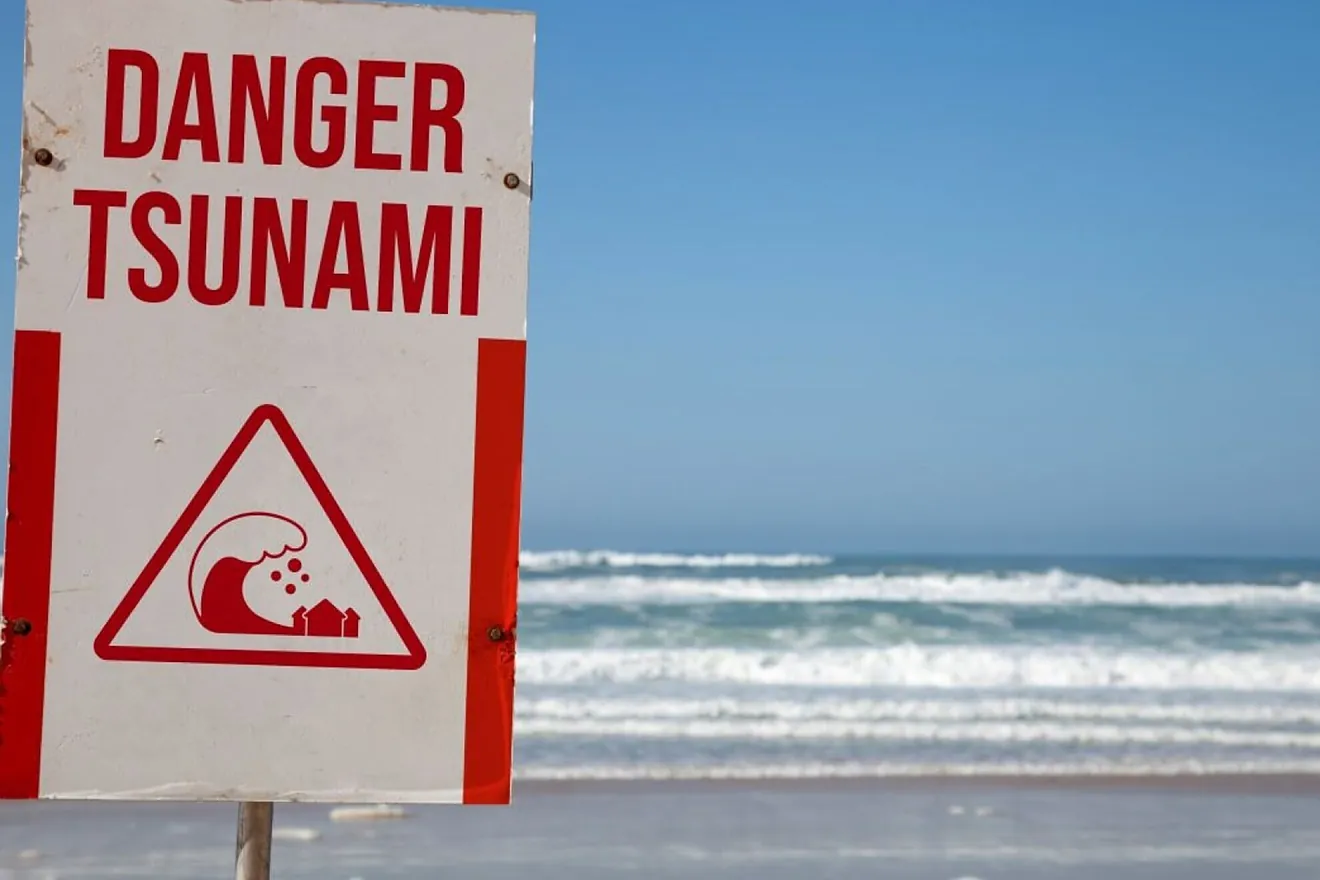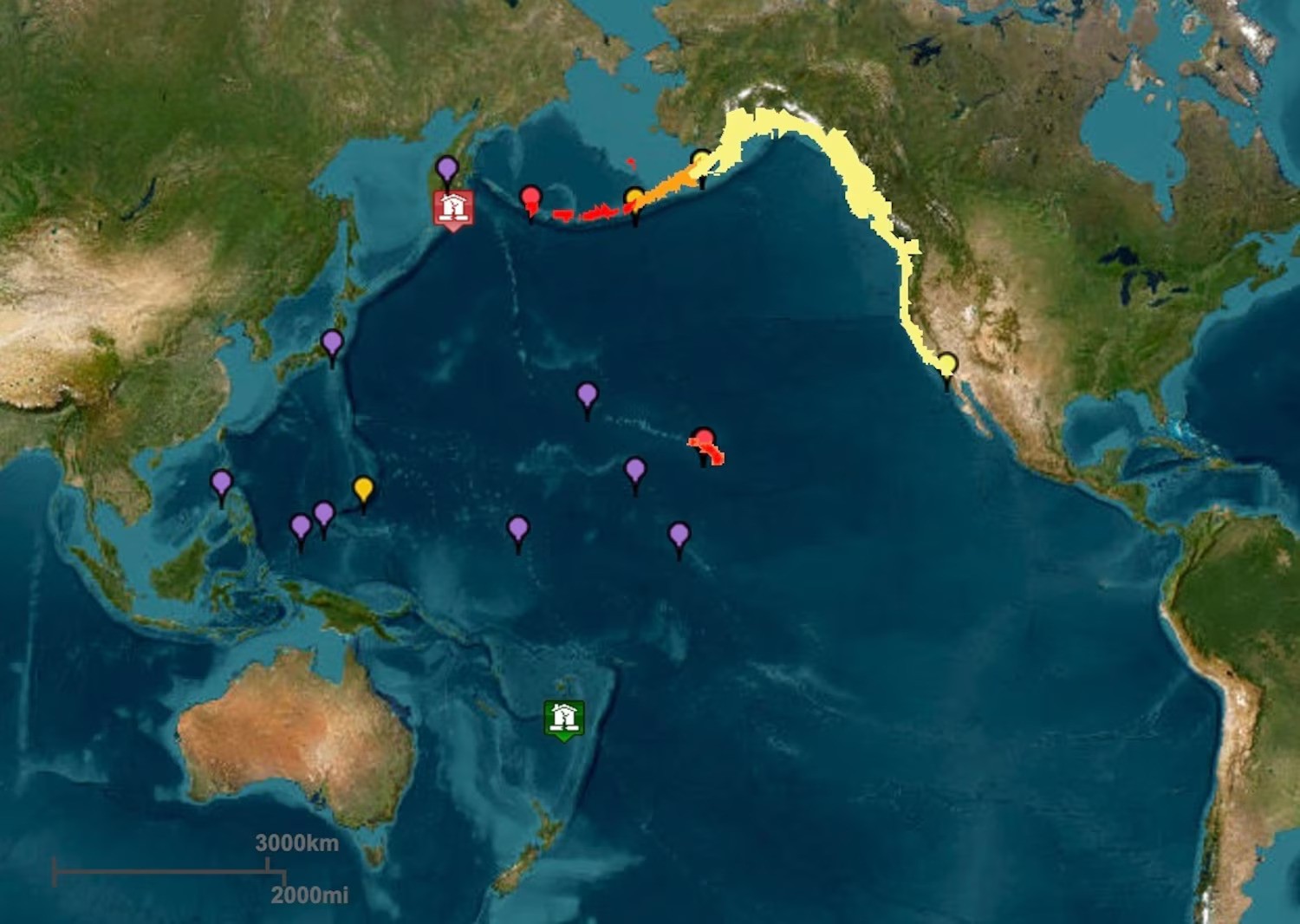8.8 Earthquake Near Russia Sparks Tsunami Warnings Worldwide

The Earthquake: What Happened
8.8 Earthquake Near Russia Sparks Tsunami Warnings Worldwide after a powerful quake struck off Russia’s southeastern Kamchatka Peninsula on July 29, 2025. The epicenter was located approximately 126 kilometers (79 miles) east-southeast of Petropavlovsk-Kamchatsky, with a shallow depth of around 19 kilometers (12 miles), according to the USGS. Initial reports estimated a magnitude of 8.0 to 8.7 before it was revised to 8.8.
Kamchatka authorities confirmed that tsunami waves 3 to 4 meters (10–13 feet) inundated coastal towns nearby, such as Yelizovo and Severo-Kurilsk. Though extensive damage was reported, including the destruction of a local kindergarten, comparatively few injuries resulted, and evacuations were undertaken (ABC News, The Sun).
Who Received Tsunami Alerts & Waves Forecast

Russia (Kamchatka region)
- Local beaches were struck by 4-meter waves.
- The authorities had referred to the earthquake as the strongest in decades, and it had caused the evacuation of towns such as Severo-Kurilsk.
- Citizens were affected by ruptured infrastructure, loss of electricity, and disruption of the mobile network.
Japan
- Japan’s Japan Meteorological Agency (JMA) had issued alerts to coastal prefectures from Hokkaido to Kyushu about tsunamis.
- The initial waves (~30 cm) arrived at Nemuro (Hokkaido) at approximately 10:00 a.m. JST, and later, larger waves (up to 3 meters) on coastal towns along Honshu and Kyushu.
- Forced evacuations were ordered in coastal towns in some of the prefectures of Aomori, Miyagi, Fukushima, Chiba, and Kanagawa.
United States & U.S. Territories
- Hawaii received a full tsunami warning, with the Pacific Tsunami Warning Center (PTWC) forecasting waves of 1 to 3 meters, potentially higher (KSBW).
- First wave arrival in Hawaii was estimated around 7:17 p.m. HST (July 29).
- Aleutian Islands, Alaska, were under a tsunami warning; the mainland Alaska coast, British Columbia, Washington, Oregon, and California issued tsunami advisories—anticipating minor waves or strong currents .
- Estimated times: La Push at ~11:35 p.m., Neah Bay 11:40 p.m., Long Beach 11:45 p.m., Moclips 11:50 p.m., Westport 11:55 p.m., with potential minor impacts in Puget Sound after midnight.
- Guam and American Samoa were also under a tsunami advisory status (ABC News).
Other Pacific Nations
- Tsunami alerts extended across the Pacific: Chile, Ecuador, Colombia, Panama, Costa Rica, Mexico, El Salvador, Guatemala, and various Pacific island nations, including Micronesia and the Solomon Islands.
Why This Quake Triggered Major Tsunami Warnings
- The shallow depth (~19 km) significantly increased tsunami risk (South China Morning Post).
- Multiple aftershocks of magnitude 6.9 and 6.3 followed the main event.
- Experts stress that the first tsunami waves are rarely the largest, and subsequent waves can arrive hours later, often wrapping around coastlines.
Historical and Geological Context
- The affected region lies along the Kuril–Kamchatka subduction zone, where the Pacific Plate dives beneath the Okhotsk Sea Plate—an area known for producing megathrust earthquakes with high tsunami potential (en.wikipedia.org).
- Notable previous events:
- 1952 Severo-Kurilsk quake (estimated Mw 9.0) produced ~18-meter tsunamis and over 2,300 fatalities.
- Historical quakes in 1737 and 1841 (Mw ~9.0) triggered catastrophic tsunamis reaching over 15 meters high.The
- 1923 Kamchatka earthquakes (~Mw 8.2 and 8.4) also sent tsunami waves across the Pacific, including to Hawaii and San Francisco.
Safety Tips for Coastal Residents
- Evacuate immediately if ordered—move away from beaches, harbors, river mouths, and coastal inlets.
- Avoid observing waves from the shoreline—currents can remain hazardous for hours.
- Seek shelter on higher ground or upper floors.
- Boaters should move to deeper water if safe and time permits.
- Stay tuned to official updates from the PTWC, USGS, JMA, and local emergency management agencies.
Timeline of Expected Wave Arrivals
| Region | Advisory/Warning Status | Estimated First Wave Arrival |
|---|---|---|
| Hawaii | Full Warning | ~7:17 p.m. HST (July 29) |
| Aleutian Islands, Alaska | Warning | Late afternoon local AK time |
| U.S. West Coast & British Columbia | Advisory/Watch | ~11:35 p.m.–12:00 a.m. PT |
| Eastern Hokkaido & other Japan coasts | Warnings issued | ~10:00 a.m. JST onward (July 30) |
| Kamchatka region, Russia | Local observation | Waves are already confirmed at 3–4 m |
Bottom Line
The earthquake is the strongest ever recorded and triggered tsunami warning systems across most Pacific nations. Although the damage and casualties remain minimal, the disaster highlights the importance of preparedness and quick action in seismically active regions.
